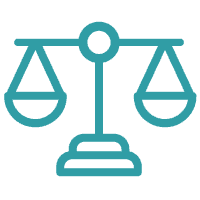Top Strategies for Effective Regulatory Leadership
Top Strategies for Effective Regulatory Leadership
Blog Article

In today's complex and ever-evolving regulatory landscape, effective leadership in regulatory affairs is more crucial than ever. Organizations face increasing pressures to comply with a myriad of regulations, standards, and guidelines across various industries. As the guardians of compliance, regulatory affairs professionals play a vital role in ensuring that products not only meet the necessary legal requirements but also align with the broader goals of safety and efficacy.
To navigate these challenges successfully, leaders in regulatory affairs must adopt strategic approaches that enhance their effectiveness. By cultivating a mindset of proactive engagement, fostering collaboration across teams, and leveraging data-driven insights, regulatory leaders can not only improve compliance but also contribute to the overall success of their organizations. In this article, we will explore key strategies that empower regulatory professionals to lead with confidence and agility in an environment filled with uncertainties and complexities.
Understanding Regulatory Frameworks
Regulatory frameworks are the foundation upon which effective regulatory affairs operate. These frameworks include laws, guidelines, and standards established by governmental and industry bodies to ensure safety, efficacy, and compliance within various sectors. Understanding these elements is crucial for professionals in regulatory affairs, as they must navigate a complex landscape that varies by region and industry.
Incorporating a comprehensive knowledge of regulatory requirements allows leaders to anticipate changes and adapt strategies accordingly. This proactive approach not only fosters compliance but also mitigates risks associated with non-compliance. It is essential for regulatory professionals to remain informed about updates and changes to regulatory frameworks to provide accurate guidance and maintain operational integrity.
Moreover, collaboration is key within regulatory affairs. Establishing strong relationships with stakeholders, including regulatory agencies, legal teams, and internal departments, helps facilitate a clearer understanding of the regulatory environment. By fostering open communication and sharing insights, regulatory leaders can create a culture of compliance that embraces continuous improvement and innovation.
Building Collaborative Relationships
Building collaborative relationships is essential in regulatory affairs as it fosters open communication and trust among stakeholders. Establishing strong connections with regulatory bodies, industry partners, and internal teams not only enhances the efficiency of the regulatory process but also leads to better-informed decisions. Meetings, workshops, or joint working groups can facilitate knowledge sharing and ensure alignment on regulatory expectations, which ultimately minimizes misunderstandings and avoids potential compliance issues.
Investing time in understanding the perspectives and priorities of stakeholders can significantly improve collaboration. By engaging in active listening and demonstrating empathy, regulatory leaders can identify common goals and work towards achieving them collectively. It is crucial to remain adaptable and responsive to the needs of collaborators, as this flexibility encourages a cooperative atmosphere. This approach extends to regulatory agencies as well, where proactive communication can help clarify regulatory pathways and requirements.
Lastly, fostering a culture of collaboration within organizations contributes to more effective regulatory leadership. Encouraging cross-departmental teamwork to tackle regulatory challenges can not only drive innovation but also ensure that diverse viewpoints are considered in decision-making processes. Regulatory affairs professionals should create an environment where feedback is valued and encouraged, further enhancing the collaborative spirit that drives compliance and brings a competitive advantage in the industry.
Regulatory Affairs Certificate
Enhancing Communication Strategies
Effective communication is vital in regulatory affairs, ensuring that all stakeholders are informed and engaged throughout the regulatory process. Regular updates and transparent information sharing can build trust among team members, regulators, and external partners. Utilizing various communication mediums, such as newsletters, webinars, and face-to-face meetings, can cater to different preferences and enhance overall comprehension of complex regulatory requirements.
Active listening also plays a crucial role in enhancing communication. By genuinely considering feedback and concerns from team members and stakeholders, regulatory leaders can adapt strategies that address the needs and expectations of all parties involved. This two-way communication fosters a collaborative environment, leading to more innovative solutions and quicker problem resolution within regulatory frameworks.
Furthermore, leveraging technology can streamline communication efforts in regulatory affairs. Tools such as project management software and document-sharing platforms facilitate real-time collaboration and ensure that all team members have access to the most up-to-date information. This not only enhances efficiency but also promotes a culture of accountability, where individuals can track progress and communicate more effectively about their roles and responsibilities.
Report this page